
From single cells to fully grown adults: human development in 20 steps
From single cells to fully grown adults: human development in 20 steps
There are many components that separate humans from other animals, but perhaps one of the most distinct is the human development process. Humans have a relatively average gestation period: 266 days, as compared with 237 days for chimps, 33 days for rabbits, and 645 days for Asian elephants. Immediately after birth, however, humans tend to fall rapidly behind animals in rate of development. Though newborn sea turtles know immediately to clamber to the ocean and infant giraffes can stand and walk within hours of birth, human infants are especially helpless, and take an extraordinarily long time to mature.
The many years and developments of the human lifespan post-womb have provided ample material for scientists to puzzle over, from Antony van Leeuwenhoek speculating over the dynamics of conception in the 17th century to Erik Erikson establishing stages of psychosocial development in the 20th century to Margaret Gullette's naming of "age studies" and subsequent, widespread research on the topic in the 1990s.
Although there is detailed knowledge available for some stages of human development—for instance, the intimate descriptions of each week of fetal development—others leave many questions. Though it is recognized that adolescence often correlates with an increased ability to evaluate risks, for example, researchers struggle to understand how this reconciles with an acknowledged tendency for adolescents to be risk takers.
Possible answers, per Butte College's Suzanne Wakim & Mandeep Grewal, include that "adolescents have different values than adults, and therefore make different decisions about risky behaviors," or that "adolescents are genetically programmed to be risk takers;" but the real answer remains a mystery. Similarly, the largest stage of human development—adulthood—is also one of the most vaguely and murkily defined, particularly towards its end. Scientists ponder if there is "an upper limit on old age," "how to slow down aging," and how to understand "the causes of aging."
To explain the stages of human development, Stacker consulted the "Human Growth and Development" chapter of Wakim & Grewal's "Human Biology" textbook, available online via Biology LibreTexts (published in 2020).
It is also important to note that human development is a highly variable measurement. The following descriptions should not be perceived as applicable to all individuals, but rather, very broad generalizations.
Read on to learn about fertilization, death, and all the developments in between.
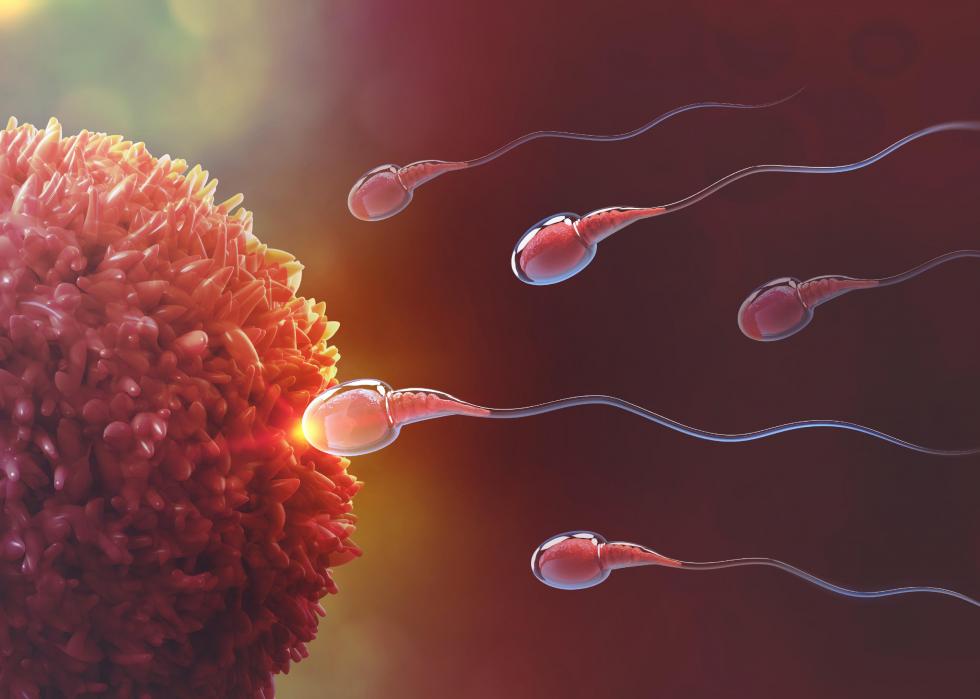
#1. Fertilization
Fertilization—which takes place in the ovary—marks the beginning of the germinal stage. This stage comprises three processes. During chemotaxis, the egg emits chemical signals to direct the sperm towards it; during adhesion, the sperm attaches to the egg and blocks other sperm from entering; and during digestion, the sperm breaks down the outer membrane of the egg (known as the zona pellucida), allowing it to enter.
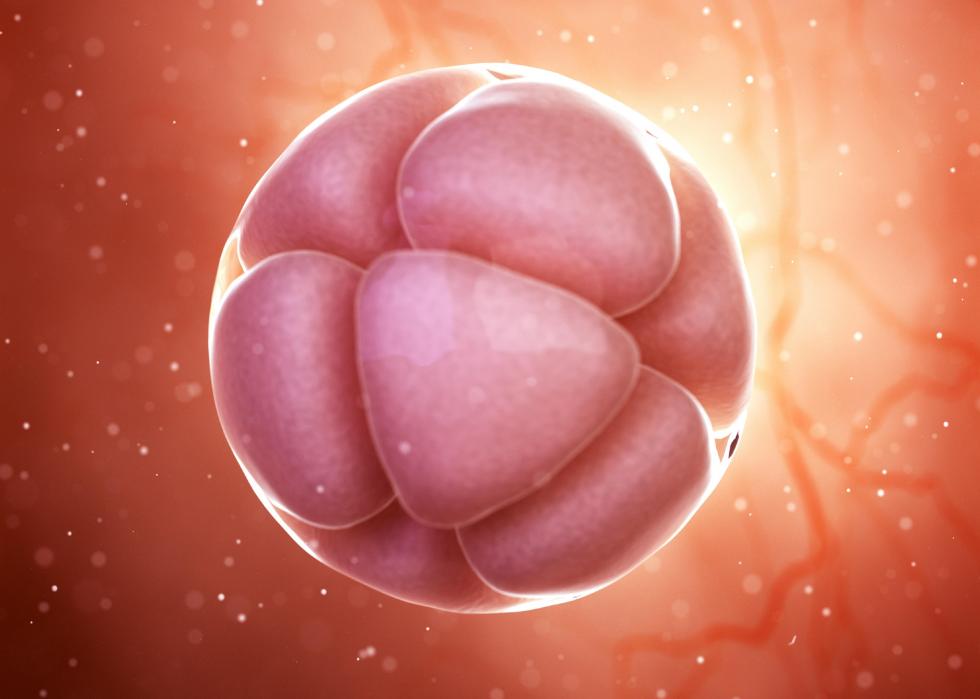
#2. Cleavage
During the cleavage stage, the joined sperm and egg—by now a "zygote," comprising one single cell—undergoes mitosis, splitting into two cells. Thereafter, the cells continue to undergo mitosis every 12 to 24 hours, forming up to sixteen cells. By the fourth day of mitosis, the resulting cells cluster together in a ball confined in the zona pellucida, known as a morula.
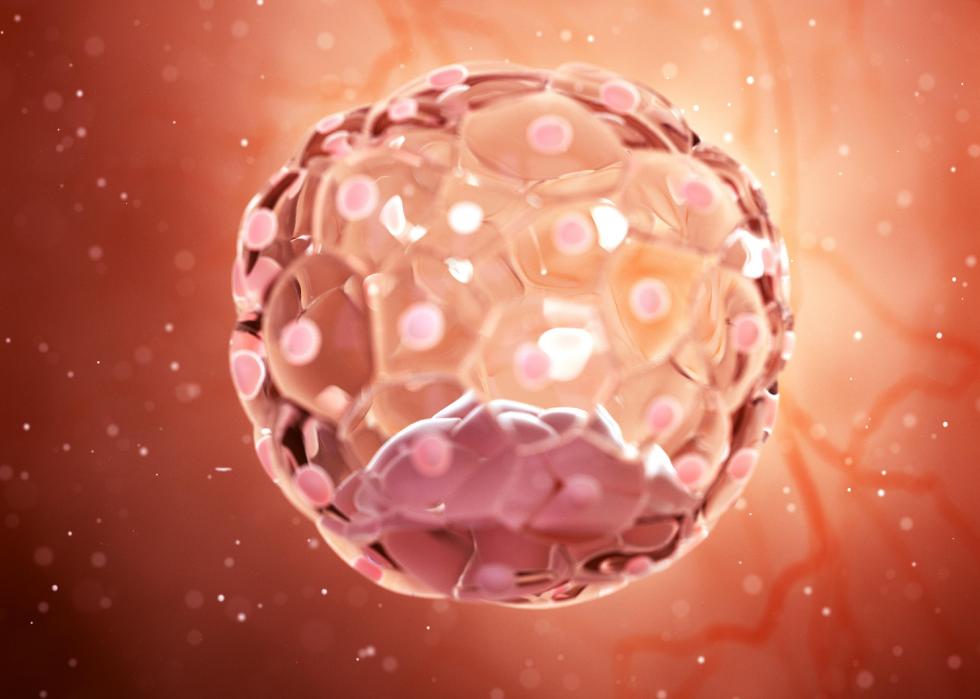
#3. Blastulation
Between five and seven days after fertilization, the morula morphs into a blastocyst in a process called blastulation. During this time, the solid ball of cells—which at this point are undifferentiated—shift into a "fluid-filled ball of differentiated cells." For the time being, the blastocyst remains coated within the zona pellucida.
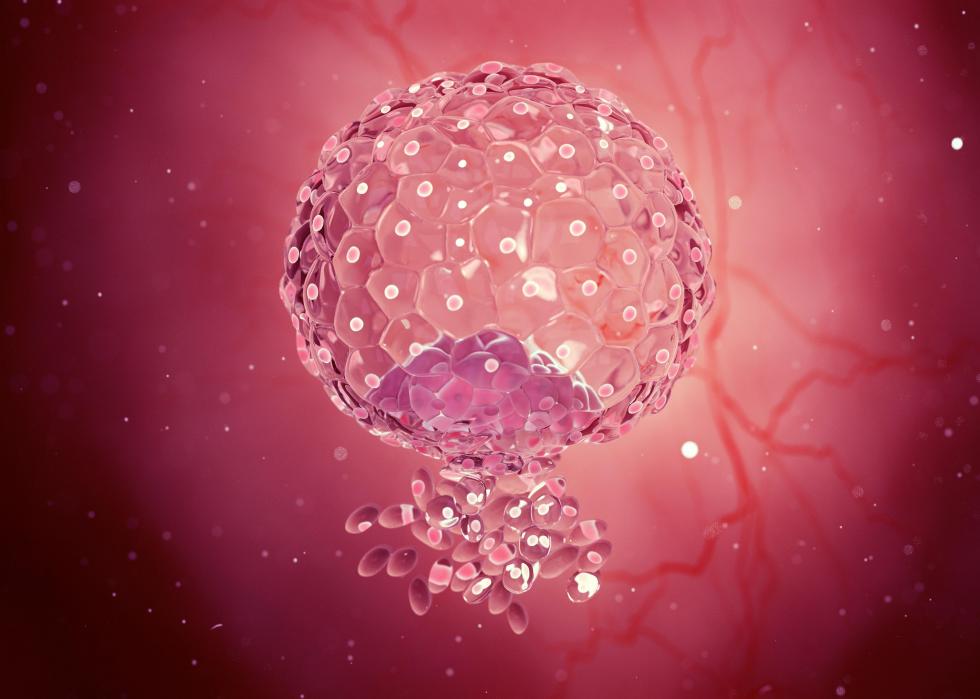
#4. Implantation
The germinal stage ends with implantation, which begins eight or nine days after fertilization. During implantation, trophoblast cells emerge from the zona pellucida, penetrating the endometrium. The trophoblasts pull the blastocyst into the endometrium until it is fully embedded in the endometrium of the uterus.
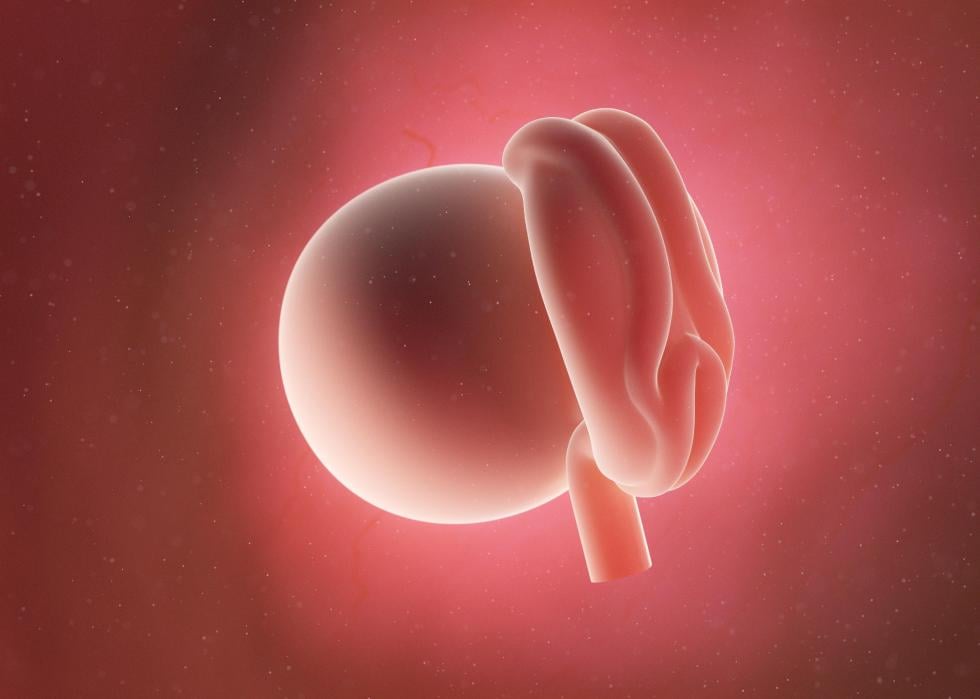
#5. Cell mass differentiation
By the time cell mass differentiation—the first step in the embryonic stage—takes place two weeks after fertilization, the blastocyst is referred to as an embryo. During this time, the embryo forms blood cells, the nervous system, and some organs. By the end of the embryonic stage, most of the organs will have formed within the embryo.
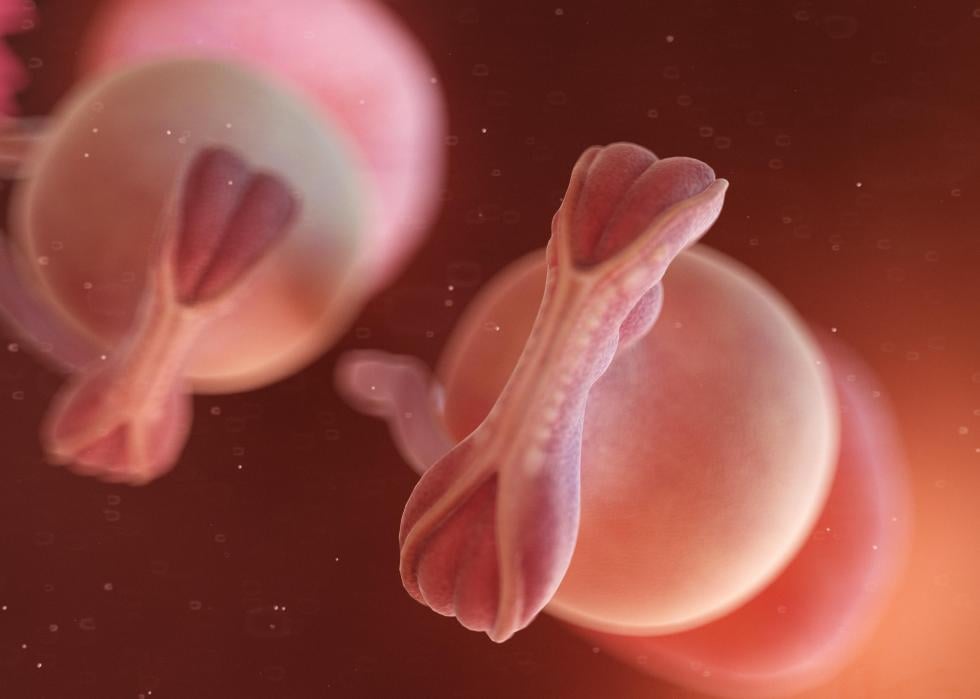
#6. Formation of the embryonic disc
The formation of the embryonic disc occurs around nine days after fertilization. During this process, the cells within the embryo split into two separate groups: the epiblast and the hypoblast. The former begin to form an amniotic cavity while pushing the latter downward, forming two layers of cells known as an embryonic disk.
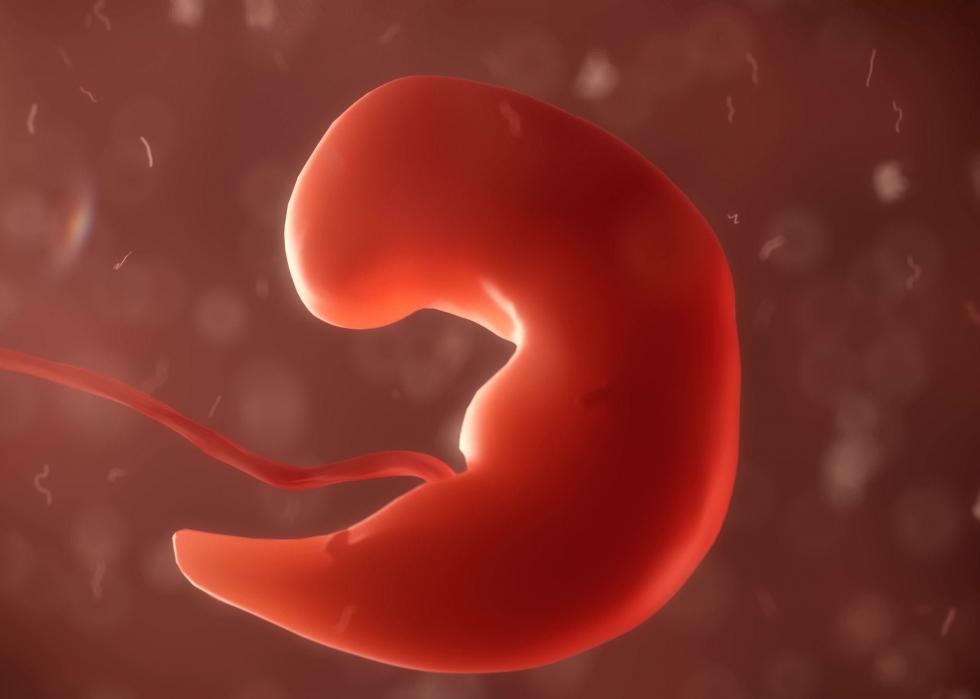
#7. Gastrulation
During gastrulation, epiblast and hypoblast cells form three cell layers—the mesoderm, ectoderm, and endoderm—known as "germ layers." Each of these layers will form distinctive internal matter: the endoderm will form the lungs, intestines, and bladder; the mesoderm will form the heart, blood, and bones; and the ectoderm will form the nervous system, eyes, and many connective tissues. Finally, a small hole (called a blastopore) forms, creating a tunnel through the embryo that will eventually become a digestive tube, with a mouth on one end and anus on the other.
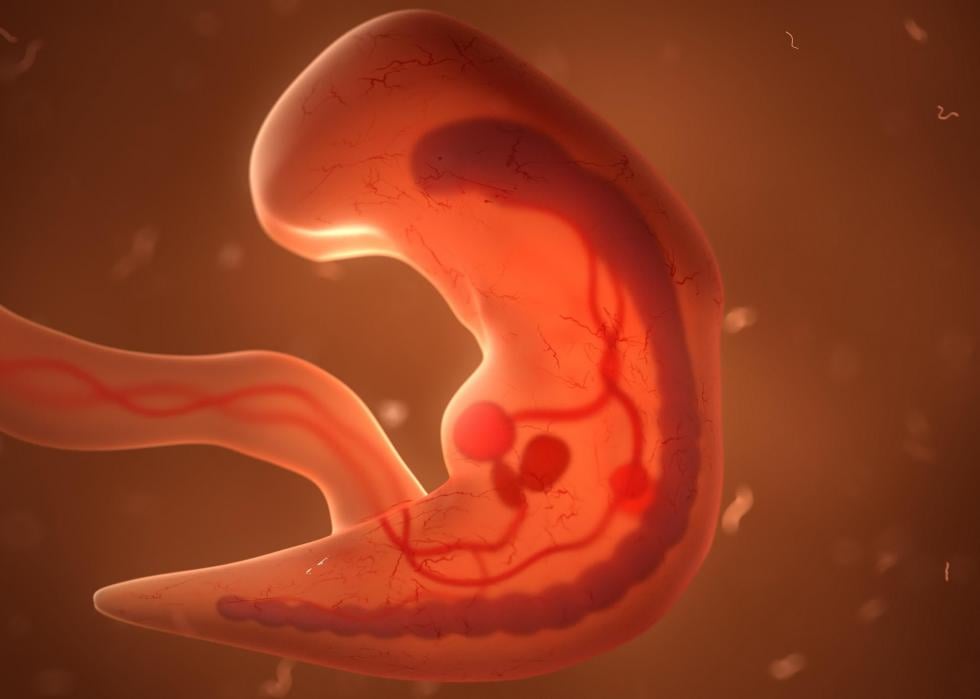
#8. Neurulation
Weeks three and four after fertilization contain the process of neurulation, in which the foundation for the nervous system is developed. During neurulation, a structure of cells called a neural plate develops and begins to fold in on itself, creating a neural tube. This tube will eventually become the spinal cord, and forms a bulge at one end that will eventually become the brain.
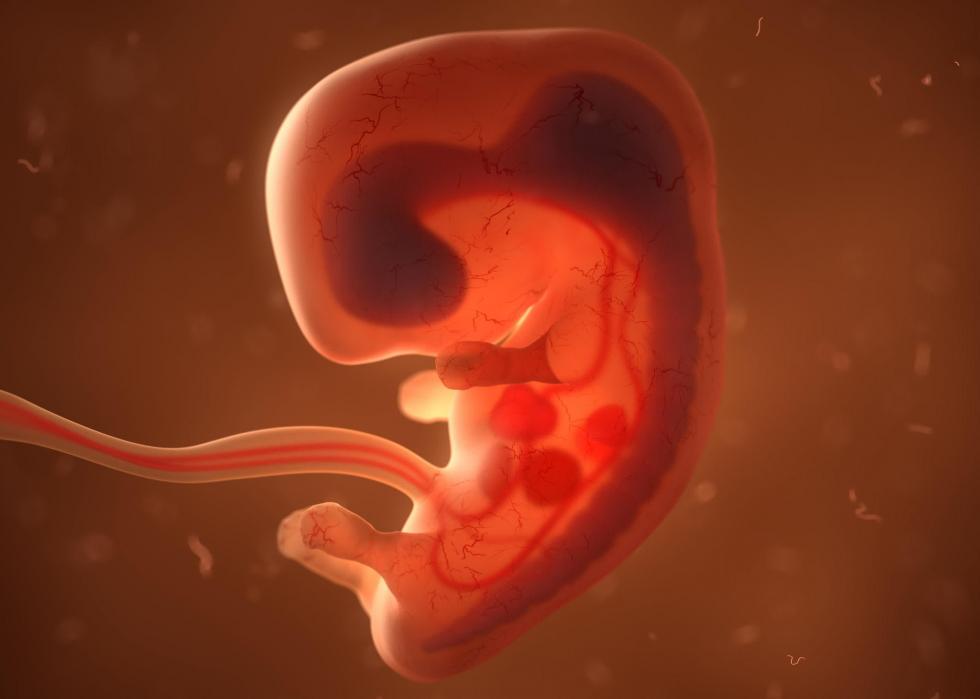
#9. Organogenesis
Organogenesis—the process in which most organs begin to form—takes place from week three to eight after fertilization. The first is the heart during the third week. Around the 21st or 22nd day, the heart will beat and pump blood, developing primitive heart chambers a day later.
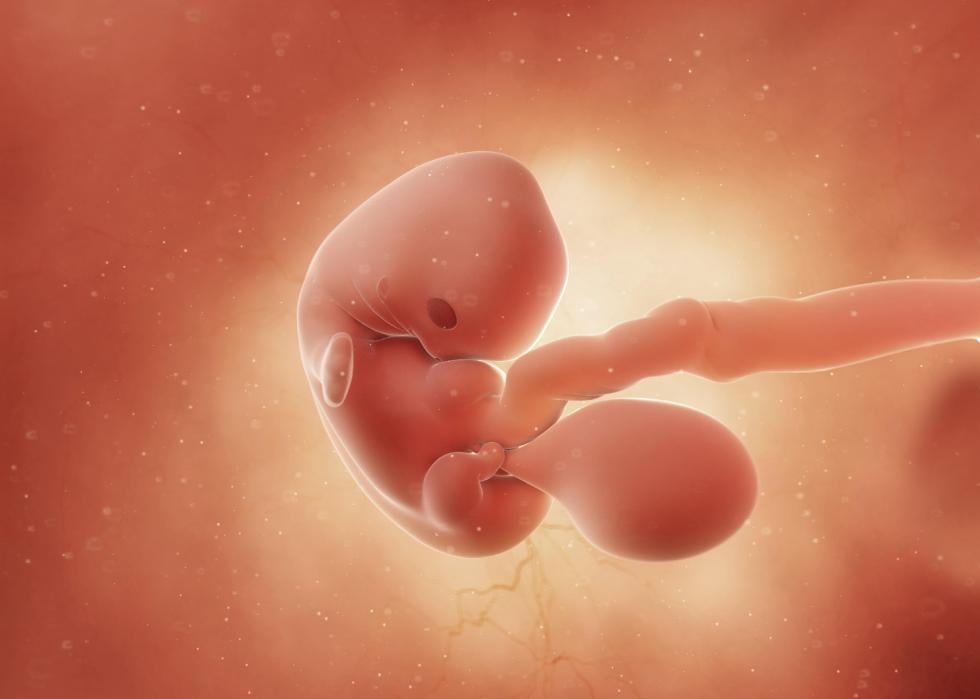
#10. Embryonic stage, weeks 6 to 8
At week six after fertilization, the embryo is around 8 mm long, and has begun developing eyes, a nose, legs, hands, and a stomach. By week seven, it is 13 mm long, and has developed lungs, sex organs, and fingers and toes. By week eight, the embryo is 20 mm long, and an ultrasound will detect a heartbeat, limb movements, and a human-like face.
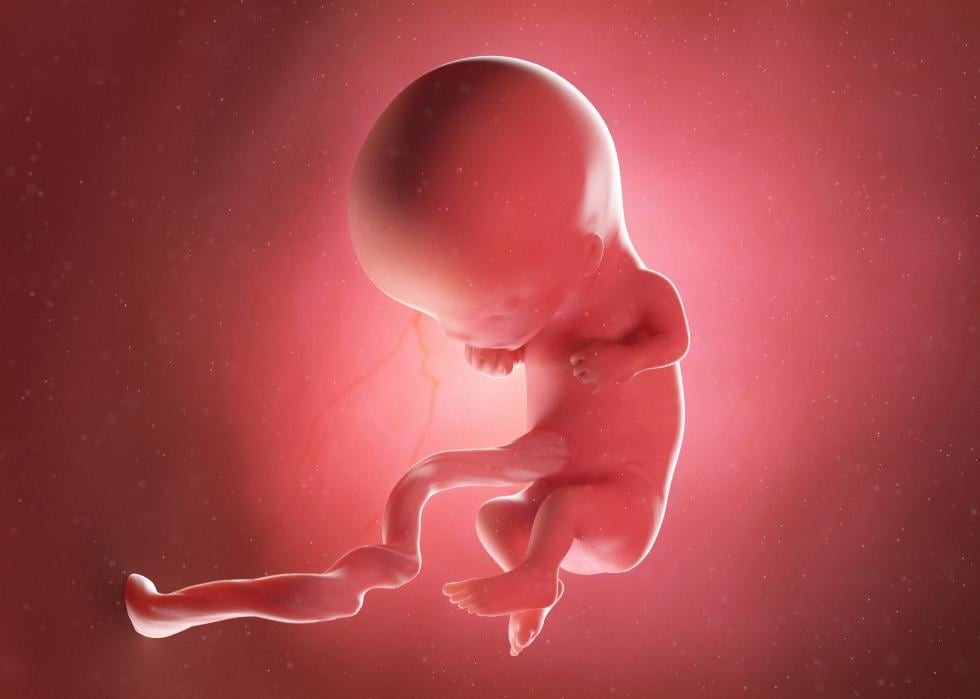
#11. Fetal development, weeks 9 to 15
During weeks nine to 15 after fertilization, reproductive organs develop so quickly that the gender of a fetus can be clearly determined by week 12. The face develops eyelids and tooth buds, and the ears will move to the sides of the head. Furthermore, the fetus will be quite active, with functioning kidneys, early brain activity, and the ability to move its limbs, make a fist, and suck with its mouth.
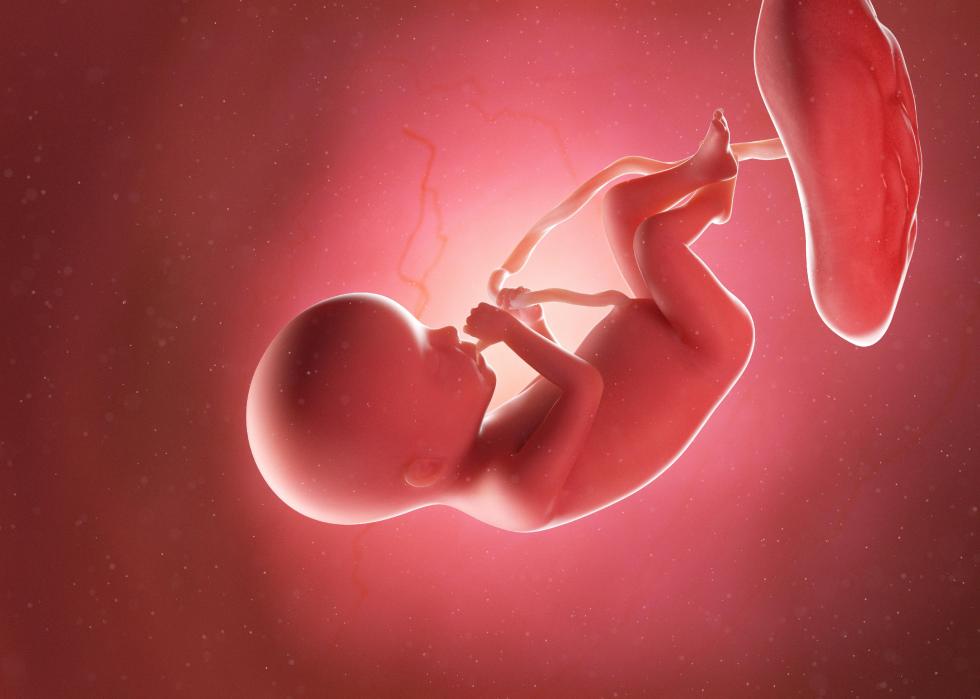
#12. Fetal development, weeks 16 to 26
Sixteen to 26 weeks after fertilization, many organs and tissues that have already begun to form will further develop at a significant rate. These include the eyes, ears, bones, muscles, and brain. Additionally, a"thick waxy coating" called the vernix develops, protecting the fetus's skin from irritation by surrounding amniotic fluid.
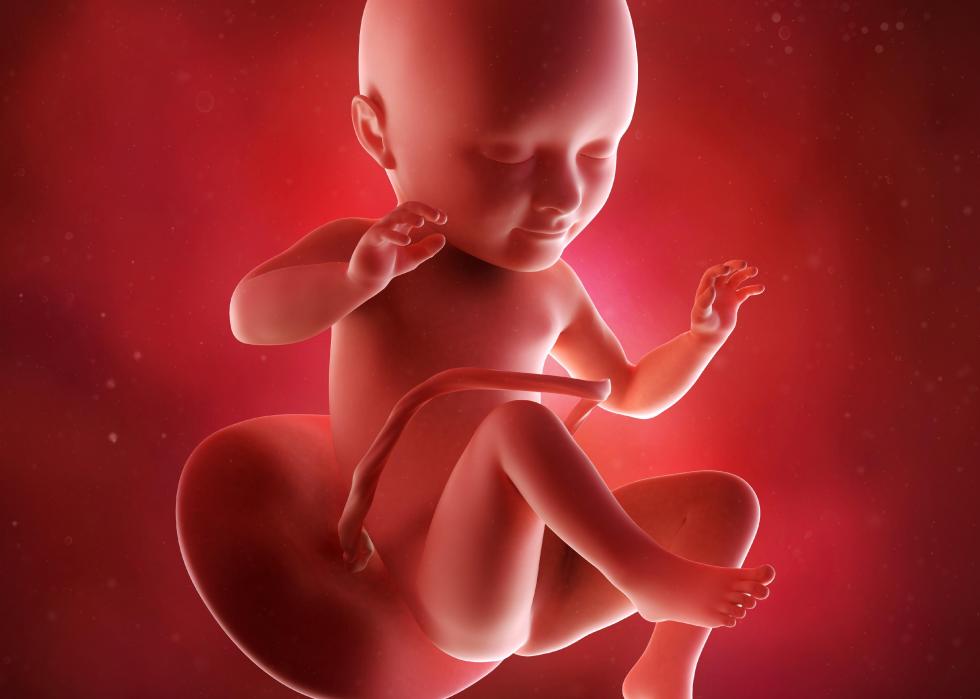
#13. Fetal development, weeks 27 to 38
The final stages of in-utero development during weeks 27 to 38 after fertilization see the fetus rapidly develop in preparation for life outside of the womb. Layers of fat form on its body, and hair on its head grows thicker. It begins to mimic breathing, and its eyes can detect light.
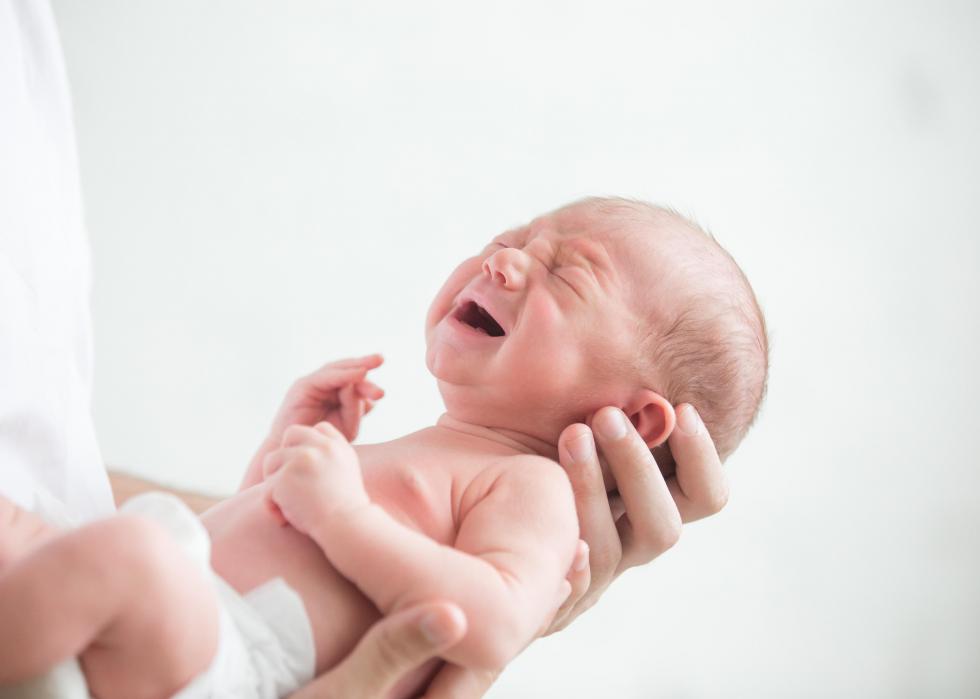
#14. Birth
Many changes take place during and immediately after birth to allow the fetus to thrive outside of the womb. Once the infant takes its first breath, blood circulation is triggered to increase, and fine hairs on the body and soft spots ("fontanels") on its head that protected the fetus in the womb and through the birth canal will take a month or more to disappear. A newborn infant weighs an average of 7.5 pounds and has a distinctly proportioned body, with wide shoulders, long arms and legs, and a protruding abdomen.
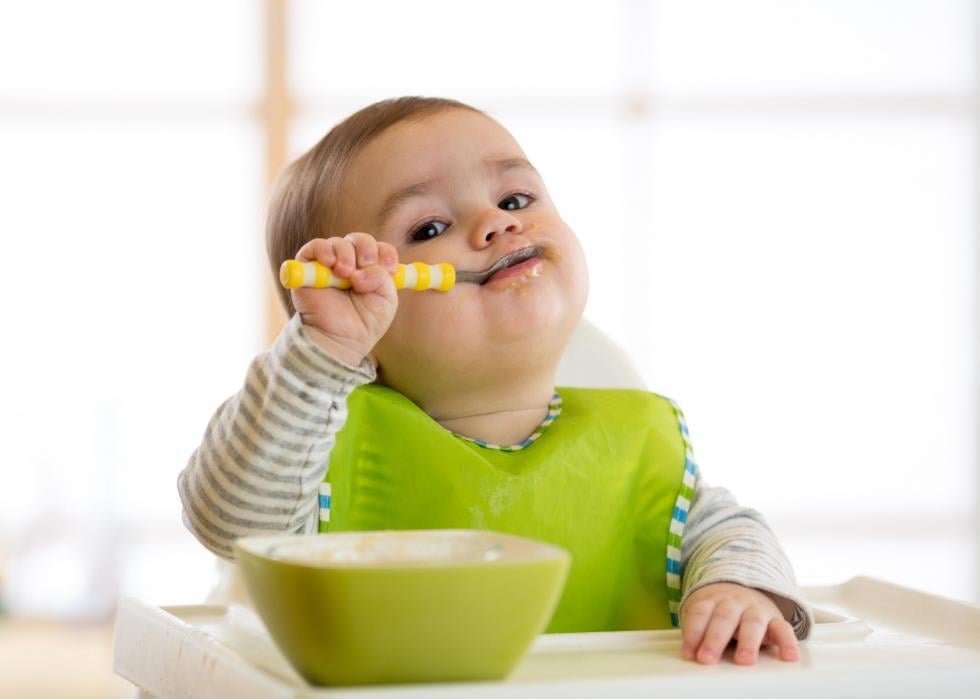
#15. Infancy
During infancy—the first year of life after birth—an infant will grow more rapidly than at any other time in life. At two months old, she will be able to smile at her parents and roll onto her back; at six months, her vision will be almost as developed as an adult's, and she will discern colors; by 10 months, she can pick up objects with a "pincer grasp," using the thumb and forefinger. By the end of the first year of life, an infant can usually stand, and may be able to walk.

#16. Early childhood
Early childhood is divided into two stages: toddlerhood, which takes place around ages one to three, and preschool stage, which continues until around age five. By two years old, a toddler can usually walk backward and run (albeit clumsily); by three, she can ask questions, sing along with songs, and show preferences; by four, she will ask the most questions, refer to objects and people that are not present, and establish relationships with peers. By the end of early childhood, a child will usually be able to recognize and emulate humor, count up to 100, and have identified "friends."

#17. Middle childhood
The elementary school years, from ages six to 10, are known as middle childhood. Physically, a child will develop agility, balance, endurance, strength, and coordination, allowing her to do things like ride a bicycle, hit a baseball, and kick a soccer ball. Cognitively, she will increase her capacity for logical thinking, concentration, and linguistic expression.

#18. Pre-adolescence
Pre-adolescence takes place between years 11 and 12 and is commonly known as the "tween" or "preteen" period. During this time, an individual will develop a sense of identity and independence; devote increased attention to her clothing and appearance; and start to experience romantic feelings towards others. Physically, growth will be relatively slow, with an average weight gain of 7 pounds per year and height increase of 2.3 inches per year.

#19. Adolescence
The transition between childhood and adulthood, adolescence, is triggered by the onset of puberty, the process of sexual maturation. During puberty, sex organs mature; secondary sex characteristics like facial hair and breasts develop; and sexual dimorphism occurs as male shoulders and chests broaden, and female breasts and hips accumulate fat. Cognitively, an adolescent's sense of judgement, sexuality, morality, body image, and group conformity all rapidly increase.

#20. Adulthood
The final stage of life, adulthood, begins after adolescence and ends at death, spanning several decades and sub-stages. From the early 20s to early 30s, an adult will usually form intimate relationships and peak in physical strength and fertility; from the mid-30s to mid-60s, an adult will typically establish a family, career, and community while regressing physically; and from the mid-60s until death, an adult will often suffer from chronic health conditions, possibly experiencing cognitive impairment, a weak immune system, and illness. The average age at death in the U.S. is 77 years for males and 82 years for females—but it is predicted that by 2050, half a million Americans will live to 100 years old.



